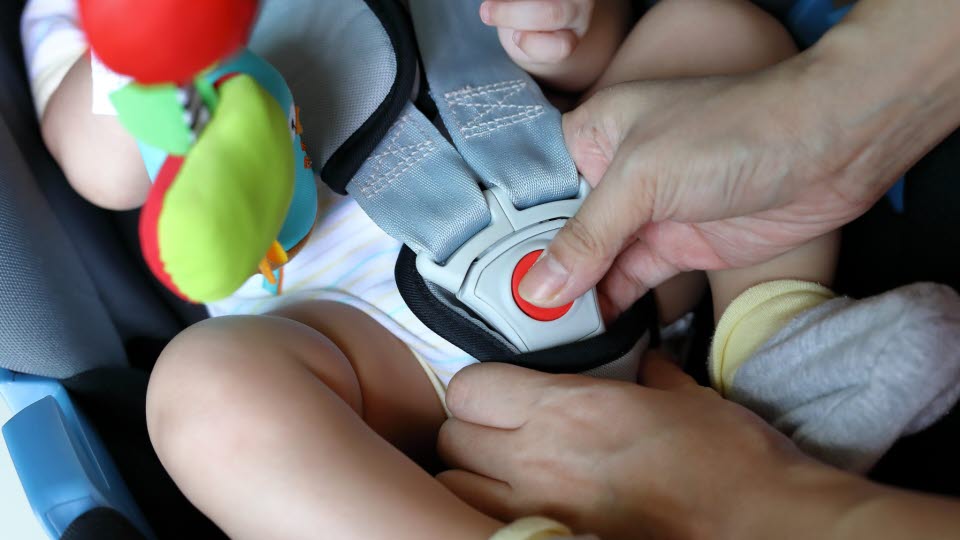Child car seat life-span –Swedish recommendations

When is it time to discard a child car seat? And what affects the lifespan? As an aid to assessing the life-span, you will find recommendations and tips regarding child car seats.
Child car seats are a prerequisite for children up to 10–12 years of age to travel safely in a car. Infants and young children up to at least four years of age travel most safely in rear-facing seats. Older children travel most safely in a booster seat, booster cushion or integrated booster seat, together with the car's seat belt.
How long does a child car seat last?
Child car seats on the market today can generally be said to have a life-span of about 10 years. This time should be calculated from the date of purchase (i.e. start of use).
The life-span can be both longer and shorter than 10 years, affected by the type of seat, handling and wear, in addition to the ageing resistance of the materials.
Safety components in child car seats, such as belts and buckles, are subject to age testing as part of the the type approval testing (UN R.44 / UN R.129).
What affects the life-span?
The life-span of a child car seat is affected by:
- ageing of materials,
- wear and tear,
- and of course if the seat has been involved in a car collision.
Booster seats and booster cushions are designed to help position the child in relation to the car belt and are therefore less exposed to forces, whereby the sensitivity to ageing is lower.
Avoid exposure to sunlight and high temperatures
Sunlight (UV-radiation) and high temperature can shorten the life-span of the child car seat.
Tips for reducing ageing of plastic materials:
- If possible, avoid prolonged exposure to sunlight and high temperatures
- Cover the empty child car seat if it is exposed to sunlight for a longer period of time
When should the child car seat be replaced?
Involved in a car collision
The child car seat must always be replaced if it has been damaged in a car collision in a way that is visible or that affects the function in some respect. This is regardless of whether a child has been sitting in the seat or not. If in doubt about the definition of a collision, see guidelines below.
Car collision – If any of the conditions below are met, the child car seat should be replaced:
- An airbag or other protection system has been activated or deployed
- Interior damage to the car caused by the collision
- Collision with larger animals
- Repair cost above 3 500 EUR in connection with the collision
Wear and tear
Wear and tear, depending on handling and use, reduces life-span. Examples of affecting wear and tear is listed below.
Wear and tear – If any of the following points cannot be remedied, the child car seat should be replaced:
- Visibly worn belt straps (harness or lowertether straps)
- Jamming belt buckles, e.g., due to dirt or liquid that has penetrated
- Jamming ISOFIX
- Connection to the child car seat base which is not easy to lock nor open
- Adjustment features, for e.g. recline, where the locking function does not work properly
- Missing details, such as belt clamps, locking buttons or levers
- Support leg or front brace that is missing or broken
- Indicators that do not work properly
An advantage of replacing a child car seat could also be to benefit from technical developments in more recent seats, which have generally become more user-friendly with a lower risk of incorrect installation.
About the recommendations
The recommendations have been developed jointly by a national expert group for child safety in cars, SIS/TK 242 External link., with representatives from child car seat and car manufacturers with subcontractors, consumer organizations, test institutes, traffic researchers, insurance companies.
External link., with representatives from child car seat and car manufacturers with subcontractors, consumer organizations, test institutes, traffic researchers, insurance companies.
For more information about your car seat, contact your dealer or supplier.
Contact
-
Emily Uddman
Research Engineer
emily.uddman@vti.se -
Fredrik Gustafsson
Technician
fredrik.gustafsson@vti.se
